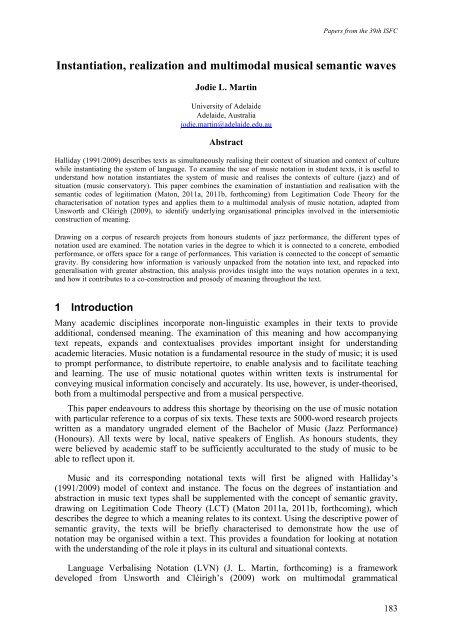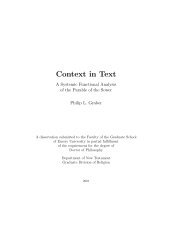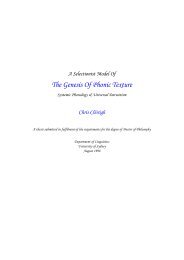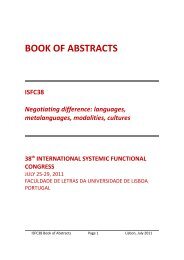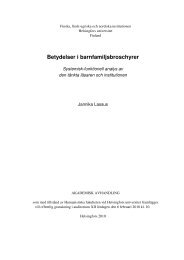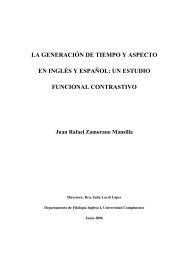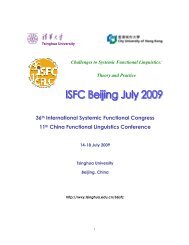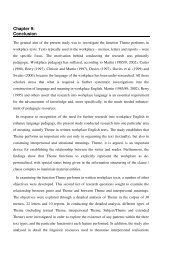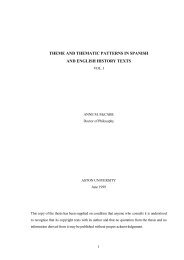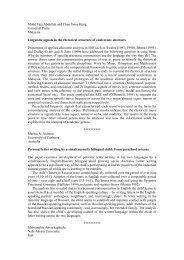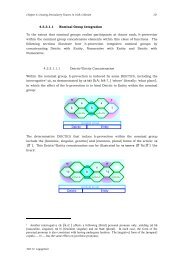the ISFC39 Proceedings - International Systemic-Functional ...
the ISFC39 Proceedings - International Systemic-Functional ...
the ISFC39 Proceedings - International Systemic-Functional ...
Create successful ePaper yourself
Turn your PDF publications into a flip-book with our unique Google optimized e-Paper software.
Papers from <strong>the</strong> 39th ISFCInstantiation, realization and multimodal musical semantic wavesJodie L. MartinUniversity of AdelaideAdelaide, Australiajodie.martin@adelaide.edu.auAbstractHalliday (1991/2009) describes texts as simultaneously realising <strong>the</strong>ir context of situation and context of culturewhile instantiating <strong>the</strong> system of language. To examine <strong>the</strong> use of music notation in student texts, it is useful tounderstand how notation instantiates <strong>the</strong> system of music and realises <strong>the</strong> contexts of culture (jazz) and ofsituation (music conservatory). This paper combines <strong>the</strong> examination of instantiation and realisation with <strong>the</strong>semantic codes of legitimation (Maton, 2011a, 2011b, forthcoming) from Legitimation Code Theory for <strong>the</strong>characterisation of notation types and applies <strong>the</strong>m to a multimodal analysis of music notation, adapted fromUnsworth and Cléirigh (2009), to identify underlying organisational principles involved in <strong>the</strong> intersemioticconstruction of meaning.Drawing on a corpus of research projects from honours students of jazz performance, <strong>the</strong> different types ofnotation used are examined. The notation varies in <strong>the</strong> degree to which it is connected to a concrete, embodiedperformance, or offers space for a range of performances. This variation is connected to <strong>the</strong> concept of semanticgravity. By considering how information is variously unpacked from <strong>the</strong> notation into text, and repacked intogeneralisation with greater abstraction, this analysis provides insight into <strong>the</strong> ways notation operates in a text,and how it contributes to a co-construction and prosody of meaning throughout <strong>the</strong> text.1 IntroductionMany academic disciplines incorporate non-linguistic examples in <strong>the</strong>ir texts to provideadditional, condensed meaning. The examination of this meaning and how accompanyingtext repeats, expands and contextualises provides important insight for understandingacademic literacies. Music notation is a fundamental resource in <strong>the</strong> study of music; it is usedto prompt performance, to distribute repertoire, to enable analysis and to facilitate teachingand learning. The use of music notational quotes within written texts is instrumental forconveying musical information concisely and accurately. Its use, however, is under-<strong>the</strong>orised,both from a multimodal perspective and from a musical perspective.This paper endeavours to address this shortage by <strong>the</strong>orising on <strong>the</strong> use of music notationwith particular reference to a corpus of six texts. These texts are 5000-word research projectswritten as a mandatory ungraded element of <strong>the</strong> Bachelor of Music (Jazz Performance)(Honours). All texts were by local, native speakers of English. As honours students, <strong>the</strong>ywere believed by academic staff to be sufficiently acculturated to <strong>the</strong> study of music to beable to reflect upon it.Music and its corresponding notational texts will first be aligned with Halliday’s(1991/2009) model of context and instance. The focus on <strong>the</strong> degrees of instantiation andabstraction in music text types shall be supplemented with <strong>the</strong> concept of semantic gravity,drawing on Legitimation Code Theory (LCT) (Maton 2011a, 2011b, forthcoming), whichdescribes <strong>the</strong> degree to which a meaning relates to its context. Using <strong>the</strong> descriptive power ofsemantic gravity, <strong>the</strong> texts will be briefly characterised to demonstrate how <strong>the</strong> use ofnotation may be organised within a text. This provides a foundation for looking at notationwith <strong>the</strong> understanding of <strong>the</strong> role it plays in its cultural and situational contexts.Language Verbalising Notation (LVN) (J. L. Martin, forthcoming) is a frameworkdeveloped from Unsworth and Cléirigh’s (2009) work on multimodal grammatical183


